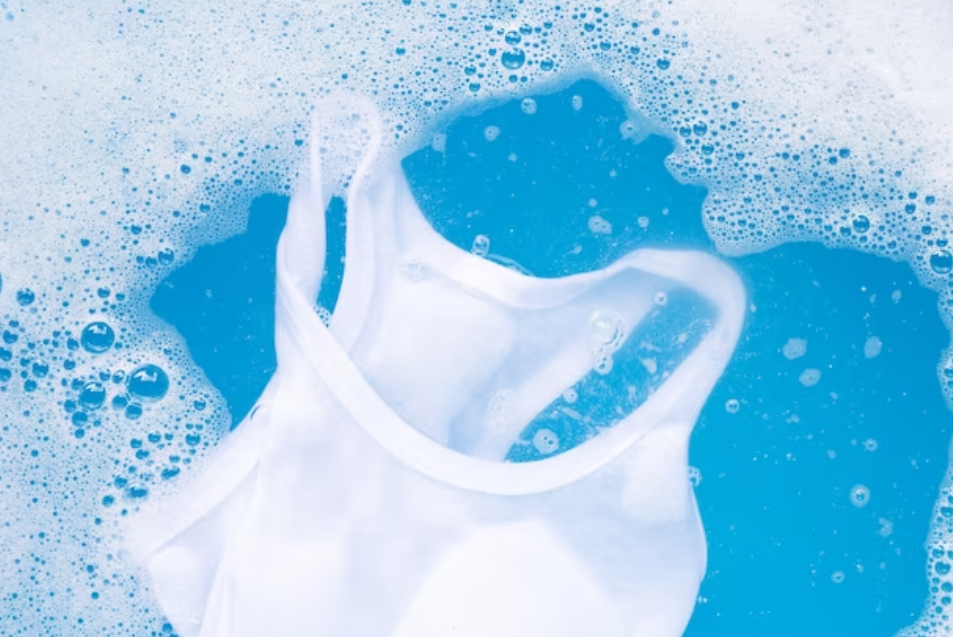
The washing effect of surfactants is a fundamental characteristic that holds significant practical applications. It is involved in the daily lives of countless households and is increasingly utilized across various industries and industrial production.
Friction often generates static electricity in fibers, plastics, and other products, affecting the application performance of these products. For example, if fiber fabrics carry static electricity, issues such as "clinginess" or "static adhesion," as well as susceptibility to dust or soiling, may arise. The impact of static electricity on plastic products is even greater. It not only makes products prone to dust adsorption but also affects transparency, surface cleanliness, and aesthetics, ultimately reducing the performance and value of the products.
To eliminate this static electricity phenomenon, surfactants with antistatic properties are commonly used. Such surfactants are referred to as antistatic agents.
The order in which fibers become charged may vary slightly among different determinations, but for fibers with amide bonds, such as wool, nylon, and artificial fur, they tend to carry a positive charge. The charging condition of common plastics is shown in Table 10-2. The general order of charging for common substances from positive to negative is as follows:
(+) Polyurethane - Hair - Nylon - Wool - Silk - Viscose Fiber - Cotton - Hard Rubber - Acetate Fiber - Vinyl Nylon - Polypropylene - Polyester - Polyacrylonitrile - Polyvinyl Chloride - Chloroethylene - Acrylonitrile Copolymer - Polyethylene - Polytetrafluoroethylene (-).
Although the exact cause of static electricity generation is not yet fully understood, it is generally believed to result from the movement of charges between different objects when they rub against each other. The charges generated due to friction can lead to static electricity, and the type of charge an object carries can be determined based on the gain or loss of electrons. If an object loses electrons, it carries a positive charge; if it gains electrons, it carries a negative charge.
There are mainly two methods to eliminate static electricity:
(1) Physical methods: Since the magnitude of static electricity is influenced by temperature and humidity, physical methods such as adjusting temperature and humidity or corona discharge can be employed to eliminate static electricity on the surface of objects.
(2) Surface chemical methods: This involves using surfactants, also known as antistatic agents, for surface treatment or blending inside plastics to eliminate static electricity.
I. Antistatic Agents for Fibers
Conditions for Antistatic Agents:
(1) Should not alter the feel of the fiber.
(2) Effective antistatic performance with a small quantity, still effective at low temperatures.
(3) Good compatibility with resin fibers.
(4) Good compatibility with other additives.
(5) No foaming and no water spotting.
(6) Non-toxic and does not harm the skin.
(7) Maintains good stability.
Types of Antistatic Agents:
The main types of antistatic agents for fibers are cationic and amphoteric surfactants.
Mechanism of Antistatic Agents:
The mechanism of surfactants used for antistatic purposes in fibers involves preventing the occurrence of static electricity and the dissipation of surface charges during friction. The prevention of friction-induced charging is closely related to the structure of the surfactant. The dissipation of surface charges is related to the adsorption amount and hygroscopicity of the surfactant on the fiber fabric.
Cationic surfactants easily adsorb onto the negatively charged fiber surface due to their positive charge. The main mechanisms include:
Neutralizing the surface charge of the fiber.
Forming an adsorption film on the fiber surface composed of a hydrophobic hydrocarbon chain in an outward adsorption state. This film effectively reduces the frictional force generated on the fiber surface during friction, weakening the phenomenon of friction-induced charging.
For synthetic fibers with low polarity and strong hydrophobicity, cationic surfactants adsorb onto the fiber surface through van der Waals forces with their hydrophobic hydrocarbon chains, while the polar quaternary ammonium groups face outward. This covers the fiber surface with a hydrophilic polar base, increasing the fiber surface conductivity and humidity, facilitating the dissipation of static electricity generated by friction.
The adsorption amount of dodecyltrimethylammonium chloride on the surface of natural fibers is significantly higher than that on synthetic fibers, indicating better antistatic properties on natural fibers.
Amphoteric surfactants, like cationic surfactants, carry a positive charge and can adsorb on the negatively charged fiber surface, neutralizing static charges. Additionally, their hydrophobic base reduces frictional forces and, compared to cationic surfactants, their molecular structure includes an anionic group, enhancing humidity and charge dissipation. Therefore, amphoteric surfactants are high-performance antistatic agents, albeit at a higher cost.
Anionic and non-ionic surfactants have lower adsorption amounts on the fiber surface, resulting in weaker antistatic effects. Non-ionic surfactants have higher adsorption amounts due to being unaffected by the fiber surface charge, but their dissipation effect on static electricity is inferior to cationic and amphoteric surfactants, making them less effective in antistatic capabilities.
The mechanism of surfactants as antistatic agents for plastics involves the surfactant adsorbing onto the plastic surface through van der Waals forces, with the hydrophobic hydrocarbon chain extending outward and the polar base. This forms a directional adsorption film, contributing to conductivity and effective dissipation of static charges. The adsorption film also mitigates the friction on the plastic surface.
Types of Antistatic Agents for Plastics:
(1) Anionic. (2) Cationic. (3) Amphoteric. (4) Non-ionic.
Classification of Antistatic Agents:
(1) Surface-coating antistatic agents. (2) Compounding antistatic agents.